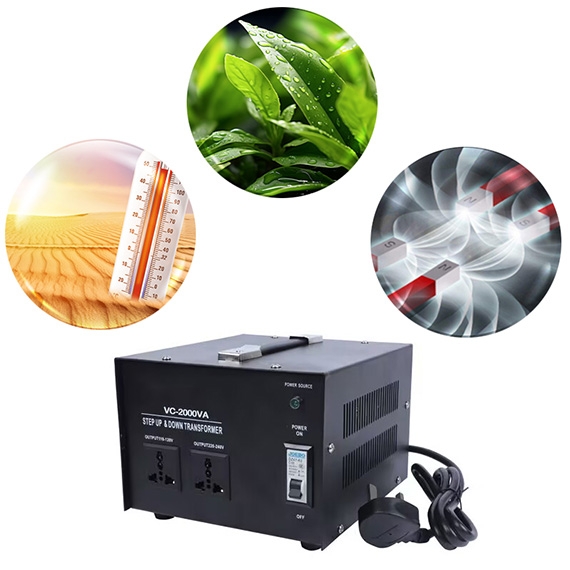A voltage converter is a power conversion device mainly used to convert input voltage into the required output voltage. The voltage converter uses the transformer principle to process the input voltage through components such as inductors, capacitors, and semiconductor devices to output the required voltage. It usually includes four parts: input end, output end, control circuit, and power switch. The input end receives external power, the control circuit regulates it, and then the power switch transfers the voltage to the output end. We often need to use a voltage converter to meet specific power needs. The following are some common scenarios that require a voltage converter.
Range where voltage converter is required
Voltage mismatch
- International travel and electrical appliance use: When the rated voltage of the electrical equipment you carry (such as laptops, hair dryers, electric irons, etc.) does not match the grid voltage of the destination country, a voltage converter is needed to ensure that the equipment can work properly and is not damaged.
- Inter-regional grid interconnection: In some regions, the grid voltage standards may be different. For example, there are differences in grid voltages between Europe and Asia. When the equipment needs to move between these regions and connect to the local grid, a voltage converter is needed for voltage conversion.

Special requirements for equipment
- Precision instruments and equipment: Some precision instruments and equipment have extremely high requirements for voltage and current stability, and the voltage converter 110 to 220 may fluctuate due to various factors (such as load changes, line losses, etc.). At this time, a voltage converter is needed to provide a stable power supply to ensure the normal operation of the equipment and measurement accuracy.
- Special working environment: In some special working environments, such as high temperature, humidity, strong magnetic fields, etc., the grid voltage may be affected. In order to ensure that the equipment can work properly in these environments, a voltage converter is needed to provide a stable power supply.
Power distribution and regulation
- Automation equipment and control systems: In automation equipment and control systems, it may be necessary to convert the grid voltage into multiple DC or AC with different voltage levels to meet the needs of different equipment. At this time, a voltage converter is needed to achieve power distribution and regulation.
- Energy conversion and storage: In the power generation system of renewable energy such as solar energy and wind energy, it is necessary to convert the voltage output by the power generator into a voltage level suitable for grid access or battery storage. At this time, the voltage converter is an indispensable power conversion device.
Safety considerations
- Prevent equipment damage: When the grid voltage is too high or too low, direct access to the equipment may cause equipment damage or shorten its service life. Using a voltage converter can ensure that the equipment works within a safe voltage range, thereby extending the service life of the equipment and reducing maintenance costs.
- Prevent electric shock accidents: When using electrical equipment in a humid or highly conductive environment, if the equipment casing leaks or the insulation performance decreases, electric shock accidents may occur. Using a voltage converter can reduce the operating voltage and current of the equipment, thereby reducing the risk of electric shock accidents.
